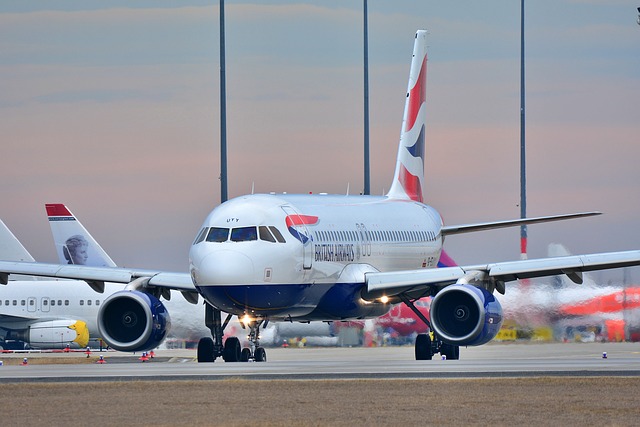Top Aviation Mechanic and Pilot Training Programs in the United States for 2025
Did you know that specialized aviation training programs in the United States can fast-track your career as a certified aircraft mechanic or pilot? Discover flexible, FAA-approved courses that fit your schedule and increase your job prospects in this growing industry.

Understanding Aviation Mechanic Training Programs
The Airframe & Powerplant (A&P) certification provided by the Federal Aviation Administration (FAA) is widely recognized for aviation mechanic professions. Programs aimed at preparing students for the FAA A&P certification exam are available nationwide, including in many metropolitan areas.
Program Structure and CurriculumA&P mechanic training programs typically last about 18 months for full-time enrollees. Accelerated tracks may enable completion in roughly 8 months full-time or extend to 16 months through flexible evening classes. These courses usually combine classroom learning and practical training, covering subjects such as:
- Airframe electrical systems
- Hydraulics and pneumatics
- Aircraft structural repairs
- Powerplant mechanics
- Safety procedures and aviation regulations
The curriculum is designed to build skills in diagnosing, repairing, and maintaining aircraft to ensure reliability and compliance with FAA standards.
Eligibility and Certification ProcessMost applicants need a high school diploma or equivalent to enroll in aviation mechanic programs. These courses commonly prepare students to pass the FAA A&P certification exam, which consists of written, oral, and practical tests.
Obtaining FAA certification is generally regarded as vital for improving job prospects within the aviation maintenance sector. Graduates without certification might face limited access to certain employment opportunities.
Financial ConsiderationsMany institutions offer financial aid, scholarships, and grants. Tuition and fees differ depending on the school and program duration and typically reflect the cost of specialized technical training.
Flight Training and Pilot Certification Programs
Flight training programs support advancement from private pilot status to commercial and airline transport pilot certifications.
Licensing PathwaysFlight training usually progresses through a series of licensing steps, such as:
- Private Pilot License (PPL)
- Commercial Pilot License (CPL)
- Multi-Engine Rating
- Instrument Rating
- Airline Transport Pilot (ATP) Certificate
Some students attend Part 141 flight schools, which provide structured curricula aimed at facilitating efficient training. These programs often offer opportunities to accumulate the flight hours required for advanced certifications.
Training DurationThe length of flight training depends on individual prior experience and scheduling. Achieving commercial and ATP licenses may require several months to multiple years. Certain programs also offer routes to earn college credits alongside pilot certifications.
Exploring Aviation Career and Training Options
The aviation industry in 2025 continues to evolve, with various training programs supporting diverse job roles.
Careers in Aviation TrainingBeyond mechanics and pilots, other potential roles include:
- Flight instructors holding commercial pilot and instructor certificates
- Technical trainers specializing in flight operations and aircraft systems
- Cabin crew training specialists
- Airport operations trainers and flight dispatchers
- Aviation course designers and program coordinators
These positions often require specialized expertise and relevant certifications as mandated by regulatory bodies.
Educational Developments and Industry CollaborationSome programs incorporate innovative learning tools, including AI-based study aids, and offer dual academic-credit pathways. Collaborations with aviation employers may provide graduates with connections to maintenance and pilot career opportunities.
Training Duration and Scheduling Options
Mechanic Training Timelines
- Standard A&P programs: Approximately 18 months full-time
- Accelerated programs: About 8 months full-time or 16 months part-time (evenings)
- Avionics and dispatcher certifications: Specialized courses usually lasting 4 to 10 weeks
Flight Training Timeframes
- Private pilot license: Varies by lesson frequency, typically several months
- Commercial pilot license and ratings: Additional months to years
- ATP certification preparation: Includes structured flight hour-building, usually totaling 1,500 hours
Many programs provide flexible scheduling designed to accommodate working adults or students balancing other responsibilities.
Preparing for Airport and Aviation Sector Employment
Graduates of aviation training programs may qualify for various roles within airports and airline operations, including:
- Aircraft maintenance technicians servicing fleets for airports and carriers
- Flight instructors supporting pilot education
- Aircraft dispatchers involved in managing flight operations safety and efficiency
- Avionics technicians overseeing electronic aircraft systems
Although salaries and job availability vary by location and employer, projections from the Bureau of Labor Statistics forecast sustained demand for aviation mechanics and related trained professionals in the U.S. through 2033.
Factors to Consider When Selecting an Aviation Training Program
When choosing aviation training programs, evaluate factors such as:
- FAA certification approval and support for licensing exam preparation
- Access to hands-on learning facilities and resources
- Scheduling flexibility to fit your availability
- Availability of financial aid and overall program costs
- Employment assistance services like resume building and interview coaching
- Established relationships with airlines or industry employers supporting career placement
- Program length matching your career timelines
Programs offering dual credentials (for example, a degree along with FAA certification) may provide enhanced career development opportunities.
In 2025, aviation training programs and mechanic courses in the United States offer structured educational paths for those pursuing careers in aviation maintenance or flight operations. Whether targeting FAA certification as an aircraft mechanic or obtaining pilot licenses, training options include flexible, accelerated, and academically integrated pathways. With ongoing industry growth, these programs can prepare candidates for various aviation roles that require certification and regulatory compliance.
Sources
- Universal Technical Institute Aviation Mechanic School & Training
- US Aviation Academy’s Aviation Training Expansion
- Aviation Job Search - Aviation Training Jobs Overview
Disclaimer: All content, including text, graphics, images and information, contained on or available through this web site is for general information purposes only. The information and materials contained in these pages and the terms, conditions and descriptions that appear, are subject to change without notice.




